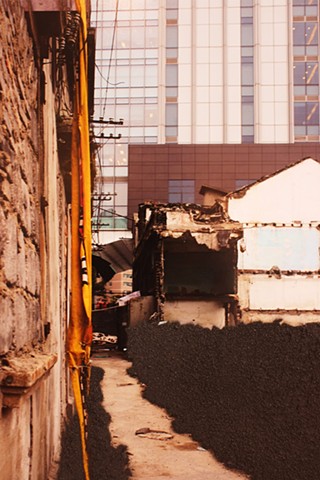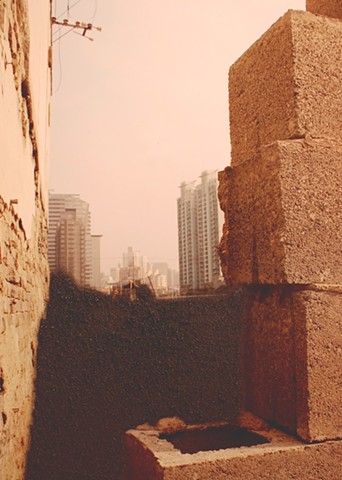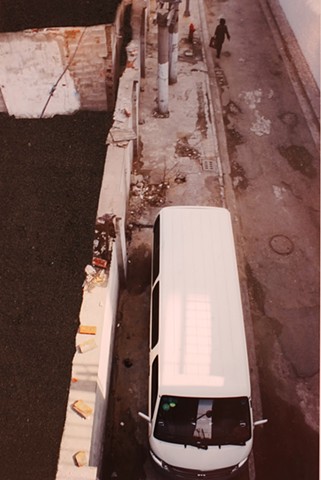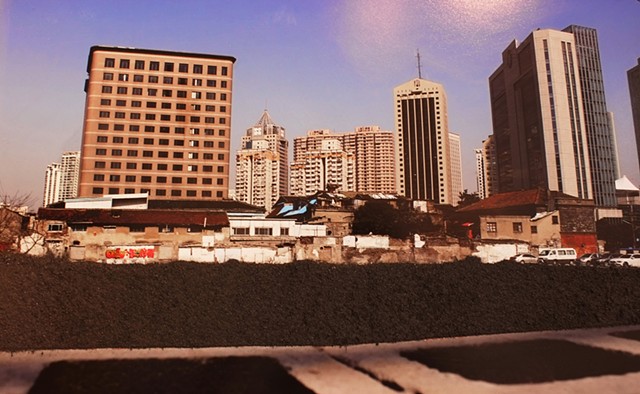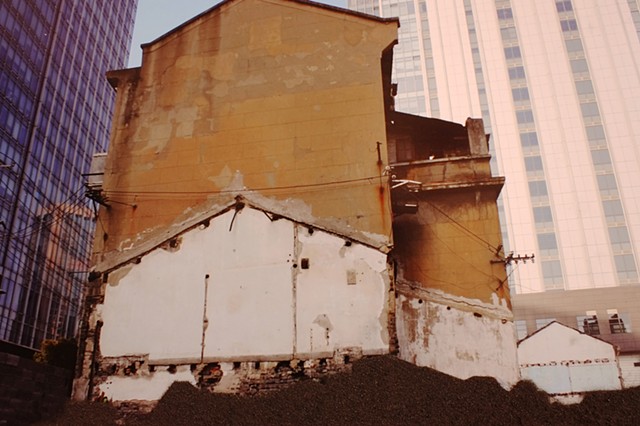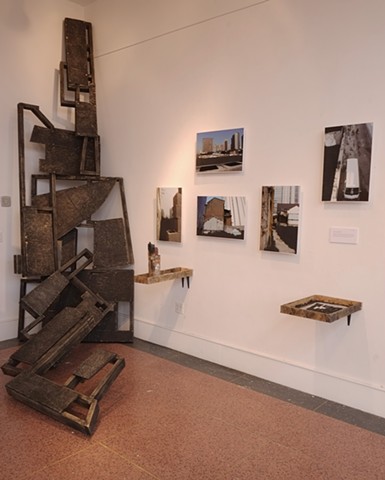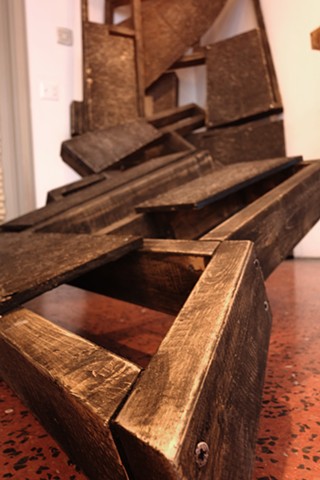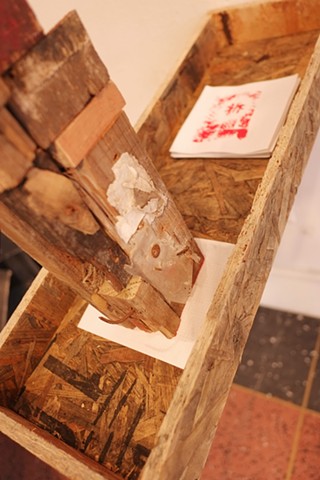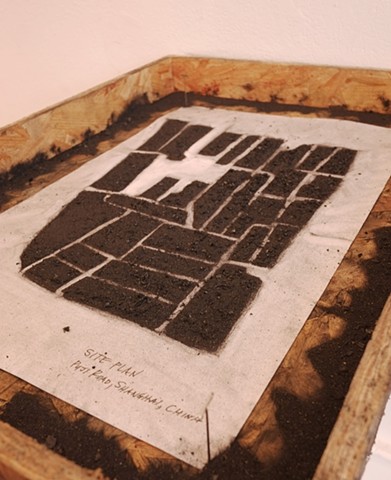To Be Destroyed
Puji Road: To Be destroyed
Found Wood, Lumber, Digital Prints, Charcoal
Shanghai is in the act of continual re-imagination. It is a mega-city of 23 million that writes, and re-writes, itself daily. Building rise and fall, and we are left to walk on the rubble. This site, Puji Road in the Puxi District, was suspended in the state between destruction and reclamation during my visit, an entire city block of make-shift homes reduced to fragments of wood, plastic, and garbage.
The digital images depict the site as it existed during my visit: former dwellings reduced to rubble and wood shards to make way for Shanghai’s rapid development. Wood fragments, the last physical remnant of the site's history, were removed from the site, heated at high temperatures to form charcoal, and then crushed into a fine dust. The charcoal dust was then overlaid onto the digital prints, covering the site with the site.
The sculpture borrows its form from the original street grid of Puji Road site before its destruction. Composed of 2 x 4s and particle board, the structure is covered with charcoal dust processed from found lumber at the site. A charcoal drawing, using this same dust, shows the street layout of the Puji Road block. The printing stamp forms a Mandarin character which, roughly translated, means To be Destroyed.
The prints and sculpture form an installation that reveals a history of a space that, like many of China's major cities, is being re-written.
